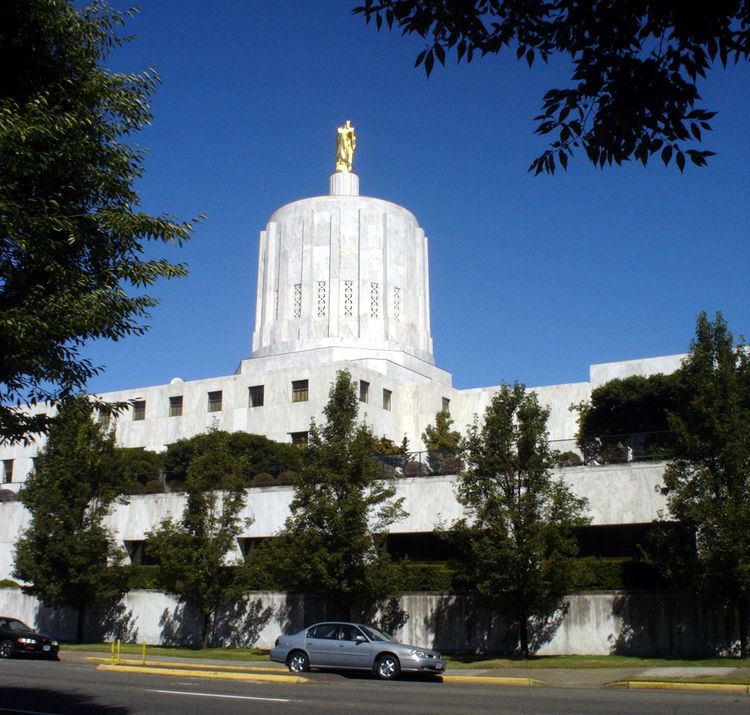 | ||
Trowbridge & Livingston was an architectural practice based in New York City in the early 20th century. The firm's partners were Samuel Breck Parkman Trowbridge (1862 B.C–1925) and Goodhue Livingston (1867–1951). Founded in 1894 as Trowbridge, Livingston & Colt, the firm became known for its commercial, public, and institutional buildings, many in a Beaux Arts or neoclassical style, including the B. Altman and Company department store (1905), J. P. Morgan Building (1913), and the Oregon State Capitol (1938). Often commissioned by well-heeled clients, the firm's work especially prevalent in the Upper East Side and Wall Street precincts of New York.
Contents
Partner biographies
Trowbridge was born May 20, 1862 to William Petit Trowbridge and Lucy Parkman Trowbridge, the fourth of eight children. His father was a military engineer who oversaw construction of Fort Totten Battery, and repairs to Fort Schuyler during the American Civil War. After the War, he became professor of mechancial engineering at Yale's Sheffield Scientific School in 1871, then at the Columbia School of Mines in 1877. The younger Trowbridge studied at Trinity College in Hartford, Connecticut. On graduating in 1883, he attended Columbia University, and later studied abroad at the American School of Classical Studies in Athens and at the École des Beaux-Arts in Paris. On his return to New York, he entered the office of George B. Post. Trowbridge worked in the firm for over 30 years, until his death in 1925.
Goodhue Livingston, from a distinguished family of colonial New York, received his undergraduate and graduate degrees from Columbia during the same period Trowbridge was at the school.
Firm activity
In 1894, Trowbridge, Livingston and Stockton B. Colt formed a partnership that lasted until 1897 when Colt left, and the firm became Trowbridge & Livingston. Its major commissions were received between 1901 and 1938, most in a Beaux Arts or neoclassical style.
The majority of the firm's work was in New York City, where the firm designed several notable public and commercial buildings. Among the most famous are the neo-Baroque St. Regis Hotel (1904) and the former department store for B. Altman and Company (1905), both on Fifth Avenue; the 37-story Bankers Trust Company Building (1912) at 14 Wall Street; and the J. P. Morgan Building (1913), across the street at 23 Wall Street.
Their practice extended to townhouses on Manhattan's Upper East Side, of which 41 East 65 Street (1910), 11 East 91st Street and 49 East 68th Street (1914) remain. The New York Society Library, a lending library with a long genteel tradition in New York, moved into the former John Rogers House at 53 East 79th Street.
